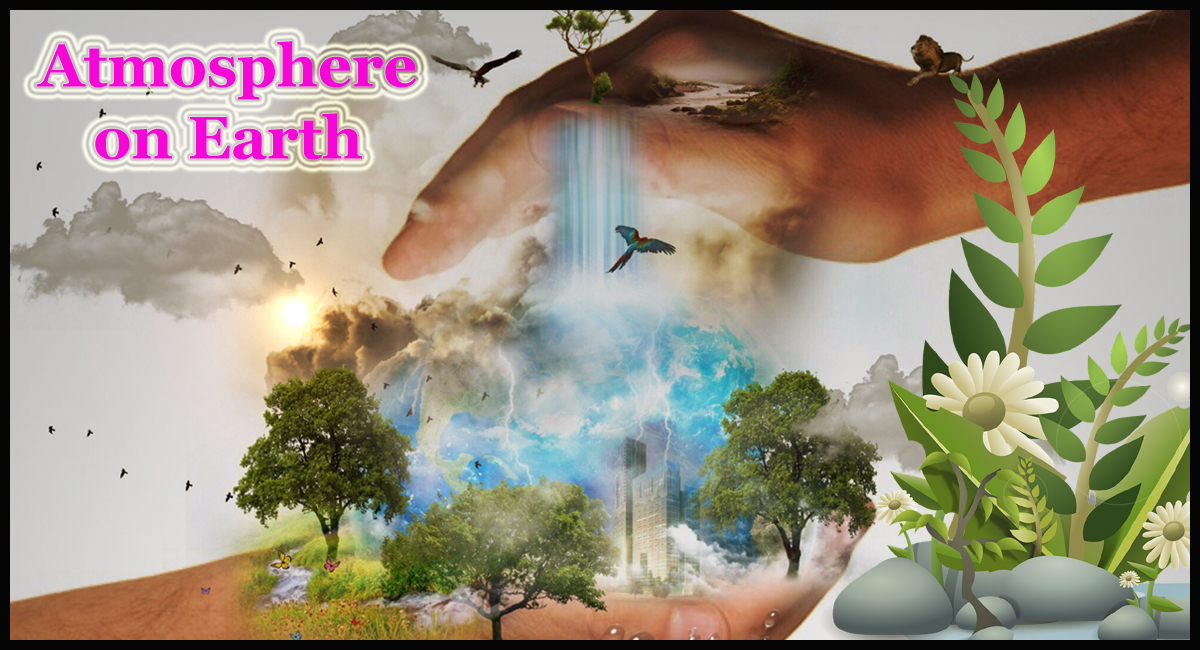
Atmosphere on Earth: The atmosphere is a layer of gases that surrounds the Earth and is held in place by the planet’s gravity. It is composed of approximately 78% nitrogen, 21% oxygen, and 1% other gases such as argon, carbon dioxide, neon, helium, and methane.
The atmosphere is crucial for supporting life on Earth, as it provides the air we breathe, protects us from harmful radiation from the sun, and helps regulate the planet’s temperature. And also The atmosphere also plays a key role in the water cycle, as it helps to evaporate water from the Earth’s surface and transport it through the atmosphere, eventually leading to precipitation.
The atmosphere can be divided into several layers based on their temperature and composition, including the troposphere, stratosphere, mesosphere, thermosphere, and exosphere. Each of these layers has unique characteristics and plays a different role in the Earth’s climate system.
However, the Earth’s atmosphere is also vulnerable to human activities such as burning fossil fuels, deforestation, and industrial processes, which can lead to the release of greenhouse gases that contribute to climate change and other environmental problems. Therefore, it is important for humans to take steps to reduce their impact on the atmosphere and protect this vital resource.
Here are some additional facts about the atmosphere:
The troposphere is the lowest layer of the atmosphere and is where weather occurs. As you go higher in the troposphere, the temperature decreases.
The stratosphere is the layer above the troposphere and contains the ozone layer, which helps protect the Earth from harmful ultraviolet radiation.
The mesosphere is the layer above the stratosphere and is where meteors burn up when they enter the Earth’s atmosphere.
The thermosphere is the layer above the mesosphere and is where the auroras occur. It is also where many satellites orbit the Earth.
The exosphere is the outermost layer of the atmosphere and gradually fades into space.
The atmosphere is not evenly distributed around the Earth; it is denser near the surface and becomes thinner as you go higher.
The atmosphere is constantly in motion, with winds and currents circulating around the globe.
Human activities have led to an increase in the concentration of greenhouse gases in the atmosphere, which has led to a warming of the planet and other climate changes.
Some pollutants released into the atmosphere can lead to air pollution and health problems, such as asthma and lung cancer.
The study of the atmosphere is known as atmospheric science. And scientists who study the atmosphere are called atmospheric scientists or meteorologists.
Here are some more additional facts about the atmosphere:
The pressure of the atmosphere decreases with altitude. And which can cause problems for humans at high altitudes, such as in airplanes or on mountaintops.
The atmosphere also helps protect the Earth from impacts by small meteoroids. And other space debris, as these objects burn up in the atmosphere before reaching the ground.
The atmosphere is responsible for creating many of the colors we see in the sky. And such as the blue color of the sky during the day and the red and orange colors during sunrise and sunset.
The composition of the atmosphere has changed over time due to natural processes such as volcanic activity and changes in the Earth’s orbit. But human activities have caused the atmosphere to change more rapidly than would have occurred naturally.
The study of past changes
The study of past changes in the atmosphere can provide important information about the Earth’s climate history and how it may change in the future.
The atmosphere is not a static system. And changes in one part of the atmosphere can have effects on other parts of the system.
The atmosphere is also important for communication, as it allows for the transmission of radio and other electromagnetic signals.
Understanding the atmosphere and how it interacts with other parts of the Earth system is important for predicting. And mitigating the impacts of climate change and other environmental issues.
Here are some more facts about the Earth’s atmosphere:
The Earth’s atmosphere is not completely uniform, and there are variations in temperature and pressure across different regions.
Also Read – All about Father’s Day
Weather patterns
Weather patterns, such as hurricanes, tornadoes, and thunderstorms. And are caused by interactions between different parts of the atmosphere and the Earth’s surface.
The atmosphere is a dynamic system that can respond to changes in the Earth’s climate. And such as changes in temperature or the concentration of greenhouse gases.
The Earth’s atmosphere is also influenced by the Sun. Also which provides energy in the form of sunlight that drives many of the processes in the atmosphere. And such as the water cycle and the movement of air masses.
The Earth’s magnetic field interacts with the charged particles in the atmosphere. And causing phenomena such as the auroras and the ionosphere.
Also Read – All about The Aam Aadmi Party
The atmosphere plays a crucial role
The atmosphere plays a crucial role in protecting life on Earth from harmful radiation from the Sun. And which can cause genetic mutations and other health problems.
The study of the atmosphere is important for a wide range of applications. Also including weather forecasting, air quality monitoring, climate modeling, and space exploration.
The Earth’s atmosphere extends much further than the surface of the planet. And there is a tenuous layer of gas known as the geocorona. And that extends several thousand kilometers above the Earth’s surface.
The atmosphere is not static and can be affected by events such as volcanic eruptions. Also which can release large amounts of gases and particles into the atmosphere. And have impacts on climate and air quality.
Also Read – All about Jaguar Land Rover

One thought on “Atmosphere on Earth”